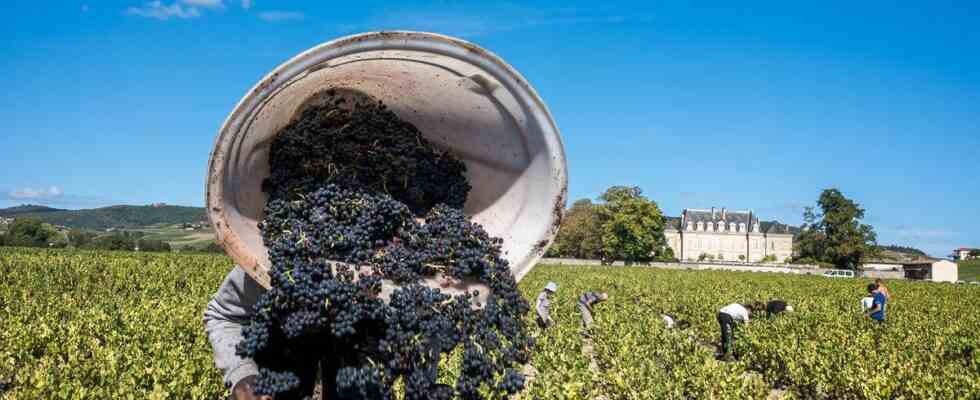In Beaujolais, the harvest began on August 17. In winegrower memory, we hadn’t taken out the secateurs so early since… 2003. The heat wave yesterday, the second hottest summer in France this year: the vines also suffered from long periods of heat and drought. But while some crops did not survive the continuous heat of the sun, the Beaujolais parcels seem to have benefited from it.
“The vines are very resistant to dry conditions”, specifies Daniel Bulliat, president of theInter Beaujolais. “Those that have suffered the most are the young vines under 15 years old, less deeply rooted. But if we hadn’t had 100 mm of rain in June, we would have been off to a very, very bad start,” he admits.
A 23% lower return compared to the last five years
This scorching summer accelerated the ripening of the grapes, without killing them. On the contrary, these small black clusters, “very sweet and concentrated in coloring matter”, are promising. “2022 is going to be a vintage of very good quality, with very different wines depending on the sector”, assures Daniel Bulliat. Depending on whether the winegrowers have chosen early (from August 17), medium or late (this week) harvests, the differences will be very marked. “In the early sectors, some wines will look like 2015, a benchmark year in terms of richness and aging capacity,” adds the president, himself a winegrower. “I have vines in each sector, and it’s quite rare to have a vintage from the same region, where you can find three different styles of wine,” he notes.
If the quality is assured, it is the quantity that will have suffered from the very dry summer of 2022. “The only regret of many winegrowers is that they will not have enough! », continues Daniel Bulliat. “The harvest is low, even very low for some. Some winegrowers will obtain between 25 and 30 hectoliters, and others between 45 and 50 hectoliters. Some will have half harvests, others 90%. As the harvest was spread over three weeks, only the first benefited from thunderstorms on August 15th. Not enough to hope for a harvest “between 650,000 and 700,000 hectoliters, all appellations combined”, admits Daniel Bulliat, who estimates a production “between 530,000 and 550,000 hectoliters over the entire vineyard”. That is a lower return of 23% compared to the last five years.
Climate challenges for the next generation of winegrowers
The wine sector is considering ways to adapt its production to global warming. In Beaujolais, vines are planted higher and higher. “Me, I plant my vines at 400-500 m altitude, rather than 200 m, whereas it was the opposite 40 years ago”, remarks Daniel Bulliat. Clonal selections have been tested, which are less convincing than varietal selections. Because if the vine is a surprisingly robust plant, it is confronted with other climatic problems, throughout the year: “The recurrent spring frost, the increasingly violent storms… In addition to the golden flavescence, an insect that injects a deadly bacterium into the vine. It’s a real scourge,” adds the winemaker.
The next generation of Beaujolais winegrowers will have to take these questions into account: 50% of the vineyard will change hands in the next ten years. In the meantime, one thing is certain: “For Beaujolais Nouveau, there will be quality wines,” assures Daniel Bulliet. “This summer’s weather spared us mildew. We would have liked to have had a little more water. But we’re not the ones who turn on the tap in the sky…” We promise: on November 17, the Beaujolais Nouveau won’t taste like flambéed bananas.

